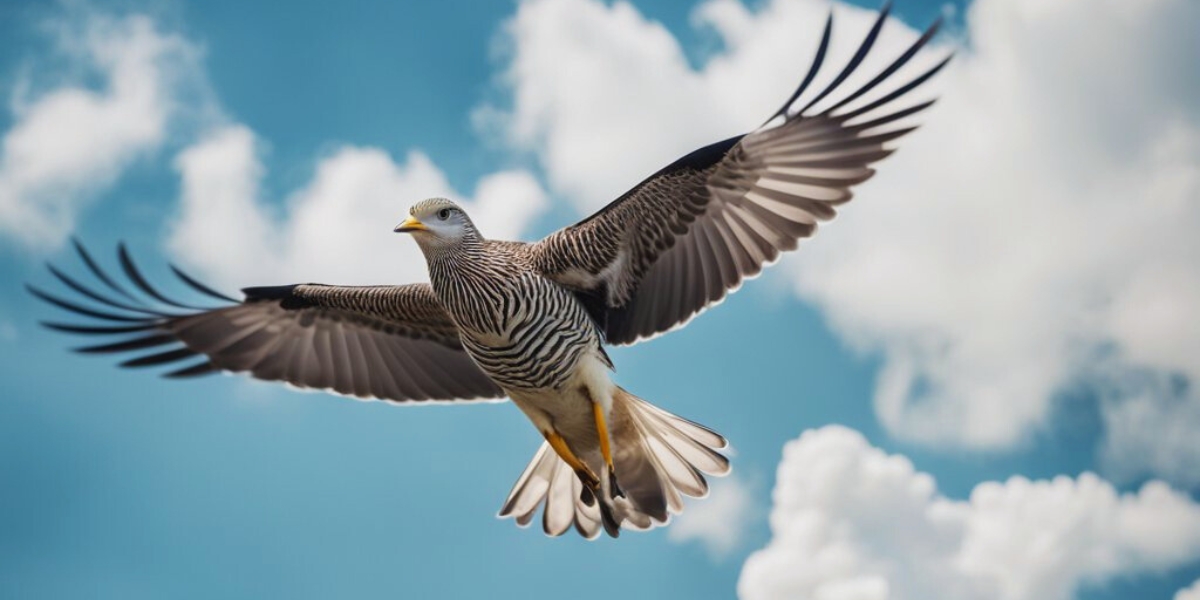Twice a year, billions of birds undertake epic migrations spanning thousands of miles between their summer breeding grounds and winter homes. These journeys take birds over oceans, deserts, mountains, and other inhospitable terrain. All along the way, migrating birds must navigate through unfamiliar terrain and weather hazards to reach their destination. So how do birds migrate without getting lost?
Birds rely on a suite of amazing sensory capabilities and navigational strategies to stay on course during migration. By orienting themselves using the sun, stars, earth’s magnetic field, mental maps, and other tools, migrating birds manage the phenomenal feat of accurate long-distance travel year after year. However, increasing challenges from human factors like habitat loss and light pollution imperil migratory success. Supporting conservation efforts can help ensure birds continue passing through our skies on their annual odysseys.
The Incredible Distances Birds Travel
To grasp the navigational challenges birds regularly overcome, it’s worth looking at the distances different species migrate:
- Arctic terns – Undertake the longest migration of any animal on Earth, flying over 40,000 miles annually between Arctic breeding grounds and Antarctic wintering areas.
- Alaskan bar-tailed godwits – May log nonstop flights of over 7,000 miles lasting 9 days from Alaska to New Zealand.
- Blackpoll warblers – Weighing less than half an ounce, these tiny songbirds migrate up to 1,700 miles nonstop over the Atlantic Ocean to their South American winter homes.
- Ruby-throated hummingbirds – Travel across the Gulf of Mexico up to 500 miles nonstop over nearly a full day, burning up to 9 times their body weight in stored fat.
- Barn swallows – Traverse 6,000 miles between North American nesting sites and South American wintering grounds.
So migratory birds regularly navigate trips of hundreds to thousands of miles, often over areas they have never previously encountered and through unfavorable conditions. Next we’ll look at the navigational tools they employ to accomplish these feats.
Primary Navigation Strategies Used by Migrating Birds
Given the vast distances covered, how do birds know which direction to travel during migration? The key navigational strategies birds utilize include:
Celestial Cues
Birds take directional compass readings from the sun, moon, and stars.
- Sun’s position – Provides a directional guide during the day. Birds can compensate for the sun’s movement by gauging solar time based on its changing angle.
- Stars – Major constellations and the milky way give reference points at night, indicating both direction and latitude position.
- Moon – May calibrate direction on partly cloudy nights when stars are obscured.
- Polarized light patterns – Even on overcast days, birds can detect polarized light cues through photoreceptors in their eyes.
Earth’s Magnetic Field
Birds likely have a magnetic “map sense” based on deposits of magnetite in their beaks and brains that gives detailed geographic position information. Experiments that interfered with birds’ magnetic compass sense caused confusion and inaccurate navigation.
Mental Maps
Birds also navigate by recognizing landmarks and using memory.
- Visual landmarks – Major topographic features like coastlines, rivers, mountains, valleys, and vegetation patterns are used to orient along migratory routes. Human-made landmarks assist as well.
- Stopover site memory – Scents and memory of specific stopover habitats help guide birds along traditional migratory flyways year after year.
In combination, these diverse strategies enable migrating birds to maintain their navigational bearings over vast distances. But supplementary cues also aid orientation.
Supporting Cues Used in Navigation
In addition to primary tools like the sun and stars, birds also utilize supporting cues to navigate:
Innate Annual Clocks
Migrating birds possess inner annual rhythms and instincts that drive them to migrate and breed during optimal seasons based on their species. This helps time migration and navigational needs.
Weather Patterns
Favorable tailwinds, temperatures, and barometric pressure help signal birds to initiate migration and make progress. Rain and storms may delay or end migratory flights.
Topography
Features like river valleys, ridgelines, and coastlines provide “leading lines” directing birds along established migratory routes.
So birds integrate multiple sensory cues for navigation. But how do they process this information?Next we’ll examine the sensory capabilities and brain functions underlying bird navigation.
Sensory Mechanisms and Brain Processing for Navigation
Specialized senses funnel spatial data to advanced brain centers:
Sensory Capabilities
- Vision – Sharp vision detects celestial objects, polarized light patterns, and visual landmarks, even over vast distances.
- Scent – Birds have a strong sense of smell that aids navigation to stopovers and breeding areas. Migratory birds have enlarged olfactory bulbs and brain regions devoted to scent.
- Magnetic detection – Birds likely sense magnetic fields via magnetite deposits in their beaks and brains. Experiments interfering with these magnetic organs caused birds to lose navigational ability.
Brain Processing
- The avian hippocampus integrates spatial information, forms cognitive maps, and supports navigation and migratory capabilities. Birds also possess brain regions similar to the mammalian thalamus and pineal gland, tied to magnetic sensing and circadian rhythms underlying migration.
So birds combine visual, olfactory, and magnetic data processed by advanced neural pathways tailored for successful navigation over long seasonal journeys. But migration still poses threats.
Hazards and Threats Migrating Birds Face
While remarkably equipped for navigation, migrating birds face considerable obstacles en route:
Inclement Weather
Storms, dense fog, rain, and strong tailwinds push birds off course. Exhaustion makes them especially vulnerable. Climate change is increasing extreme weather events along migratory routes.
Predators
Navigating unfamiliar stopovers raises predation risk from raptors, cats, and other threats. Fatigued birds are more vulnerable.
Lack of Stopover Habitat
Birds require adequate forest, wetland, and grassland stopovers to rest and feed during migration. But human development threatens these dwindling habitats.
Artificial Lighting
As light pollution expands, artificial light disorients migrating birds, causing them to stray far off course. It also interferes with birds’ ability to navigate using the stars and moon.
Collisions
Human structures like buildings, towers, vehicles, and power lines take heavy tolls on navigating birds, especially during low visibility conditions. Glass windows are also a major hazard.
Habitat loss, light pollution, and collisions exacerbate the difficulties of bird migration. But, despite these obstacles, complete route disorientation is uncommon. How do birds avoid getting perpetually lost?
Why Birds Don’t Get Lost During Migration?
Given the navigational hazards, how do most birds manage to arrive at their seasonal destinations unscathed?
Flexible Navigation Strategies
Birds don’t rely on just one orientation strategy but combine multiple techniques. This means if cues from the sun are obscured by clouds, they can switch to magnetic senses or visual landmark recognition. Their navigational toolkit provides backups.
Mental Maps
Birds form detailed mental maps of migratory routes, celestial patterns, and visual landmarks, providing route redundancy if some references disappear. Adults have flown migrations before to reinforce this mental mapping.
Safety in Numbers
Young birds likely learn migratory routes by traveling in flocks alongside experienced adults. This social navigation helps first-time migrants stay on course.
Short-term Detours
When major disorientation does occur, it’s usually short lived. Birds recognize when they are off course and can reorient themselves, making relatively small detours rather than getting completely lost for entire migrations.
So evolved navigation systems with flexibility, social dynamics, mental mapping, and short-term correction behaviors enable most migrating birds to successfully reach their seasonal destinations. But human activity continues to erode migratory success.
How to Help Birds Navigate Migrations?
Here are some tips for supporting migratory birds that pass through your area:
- Provide native plants – Supply diverse native flowers, shrubs, and trees to fuel up migrants with nutrients from seeds, nectar, fruits, and the insects they attract.
- Offer fresh water – Birdbaths and drippers provide drinking and bathing water to restore migrating birds.
- Reduce light pollution – Choose well-shielded, dim, and warmer-hued lighting, and turn off unnecessary lights during migration peaks. Luke blue-toned or extremely bright lights disorient birds.
- Make glass visible – Break up window reflections with treatments like decals, netting, or tinted films to prevent collisions. Close curtains at night.
- Keep cats indoors – Pet cats allowed outdoors heavily predate on migrants. Bring cats in during migration peaks.
- Limit pesticide use – Avoid overuse of insecticides and herbic
- ides so birds can access the nutrition they need.
- Preserve habitats – Support conservation of parks, protected wildlife areas, backyards, and other habitats to provide migratory birds with places to rest and refuel. If you own shoreline property, maintain native vegetation cover.
- Get involved – Volunteer with organizations like the Audubon Society and participate in citizen science programs that monitor bird migrations. These efforts advance research and conservation.
Taking these actions in our communities can significantly help migrating birds persist on their incredible intercontinental journeys.
Threats to Coastal Migratory Habitats
Many migratory shorebirds, seabirds, and marsh birds rely on coastal wetlands and tidal flats to rest and feed during migration. But these critical habitats face escalating threats:
- Sea level rise – Rising oceans from climate change are inundating and eroding coastal marshes used by migrating birds.
- Pollution – Oil spills, fertilizer runoff, and trash harm shorebirds and contaminate their food sources like fish and shellfish.
- Development – Coastal construction destroys wetlands and open space used by migrating birds for pit stops.
- Recreational disturbance – Bird-watchers, bikers, and others who get too close can prevent birds from feeding, resting, and storing energy for long flights.
- Non-native species – Invasive plants like phragmites outcompete native coastal vegetation relied on by migrating birds.
Supporting coastal habitat conservation and reducing pollution is crucial to sustaining migratory stopover sites.
The Magnetic Compass Sense of Migratory Birds
In addition to using solar and stellar cues, migrating birds possess a remarkable magnetic compass sense as well. Tiny magnetic mineral deposits in their beaks and brains enable birds to literally visualize the Earth’s magnetic fields and use this information to determine direction. Experiments that interfered with birds’ magnetic sensory organs caused confusion and inaccurate navigation. This magnetic compass provides an essential tool for completing vast journeys between continents with precision year after year.
People Also Read:
Conclusion
Bird migration remains one of the great marvels of the natural world. Birds transit entire continents biannually through skillful use of celestial and magnetic compasses, mental maps, and flexibility to adapt to challenges. But human activity now threatens these miraculous global journeys critical to avian survival. As urbanization and light pollution expand, migratory birds face increasing obstacles to staying on course and reaching essential stopover habitats. Supporting international conservation partnerships and reducing threats in our own communities can help ensure migratory birds continue traversing the skies, reminding us of nature’s resilience and interconnectedness. The future of migration rests in human hands.

